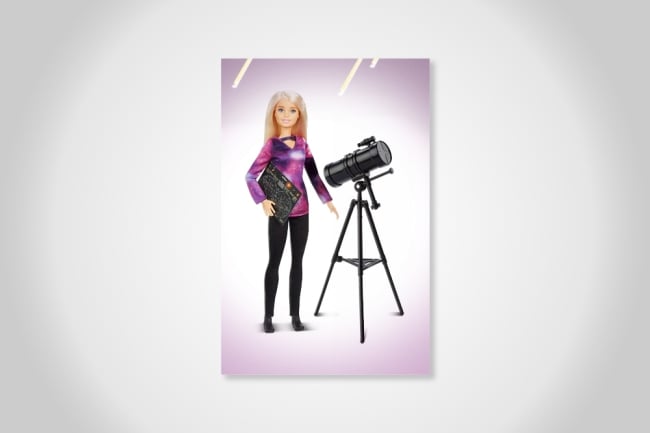You have /5 articles left.
Sign up for a free account or log in.

The Barbie astrophysicist doll, released in 2019.
Photo illustration by Justin Morrison/Inside Higher Ed.
Like millions of people around the world, I returned joyfully to the movie theater to see Barbie, albeit several weeks after opening weekend. I basked in the unapologetically feminist themes and felt all the emotions the media had advertised I would feel. Until we were introduced to Physicist Barbie.
A bit of background: I am a Ph.D. physicist and the Ann S. Bowers Associate Professor of Physics at Cornell University. I am one of nine women faculty in my department of 45 professors—a solid 20 percent representation, consistent with national averages. I am also a physics education researcher, studying how students develop as physicists through our college physics courses. A significant focus of my research has been on women’s experiences in physics.
As in my department, women are grossly underrepresented in physics, and it is not uncommon for us to be “the only” in a class or a meeting. The issues around this underrepresentation are vast and complex. A major theme is that women, including those who generally excel in math and science in school, do not identify as physicists or with physicists. Our classes and the media portray physics through photos of Einstein, Hawking, Schrödinger, Newton, Galileo. Women do not see themselves in the physicists broadly represented, and others do not think feminine women look like physicists. These images matter for women to connect their strengths and interests in physics with identifying as a physicist, which ultimately impacts whether they will pursue physics in school or as a career.
We all have stories of students expressing surprise when we introduce ourselves as physics professors. I will never forget the story of an undergraduate woman arriving for the first day of class in her sorority-labeled sweatshirt and asking another student if the seat next to him was free. His response was “This is a quantum mechanics class,” to which she responded, “I know. Is this seat free?” His response again was “This is a quantum mechanics class.”
Physics education researchers and gender studies scholars Anna Danielsson and Alison Gonsalves have described women’s grappling with “doing gender” and “doing physics,” with a sense that these two identities compete. Often, women reject what is stereotypically feminine as they embrace their identities as physicists. Whether implicitly or explicitly, they seek to fit in to the existing physics culture, which is overwhelmingly masculine. They wear pants.
With this grounding, I was halted in my reverie of Barbie when we are introduced to Physicist Barbie. As she is awakened from her Ken-induced brainwashing, dressed in a stereotypical maid's outfit, she asks, in horror, “What am I wearing?”—to which America Ferrera’s character sympathetically asks Physicist Barbie if she would like some pants.
How is it that, even in the matriarchal and feminist utopia that is Barbieland, the stereotype of antifeminine physicist identity cannot be rejected? In Barbieland, we see women in all roles and positions of power embracing their femininity. But not the physicist, who wants to wear pants. If “femininity” and “physicist” cannot coexist even in Barbieland, how are we ever to support its coexistence in the real world?
For the record, I attended Barbie with another woman Ph.D. physicist and professor, Kim Modic. We both wore pink dresses.




